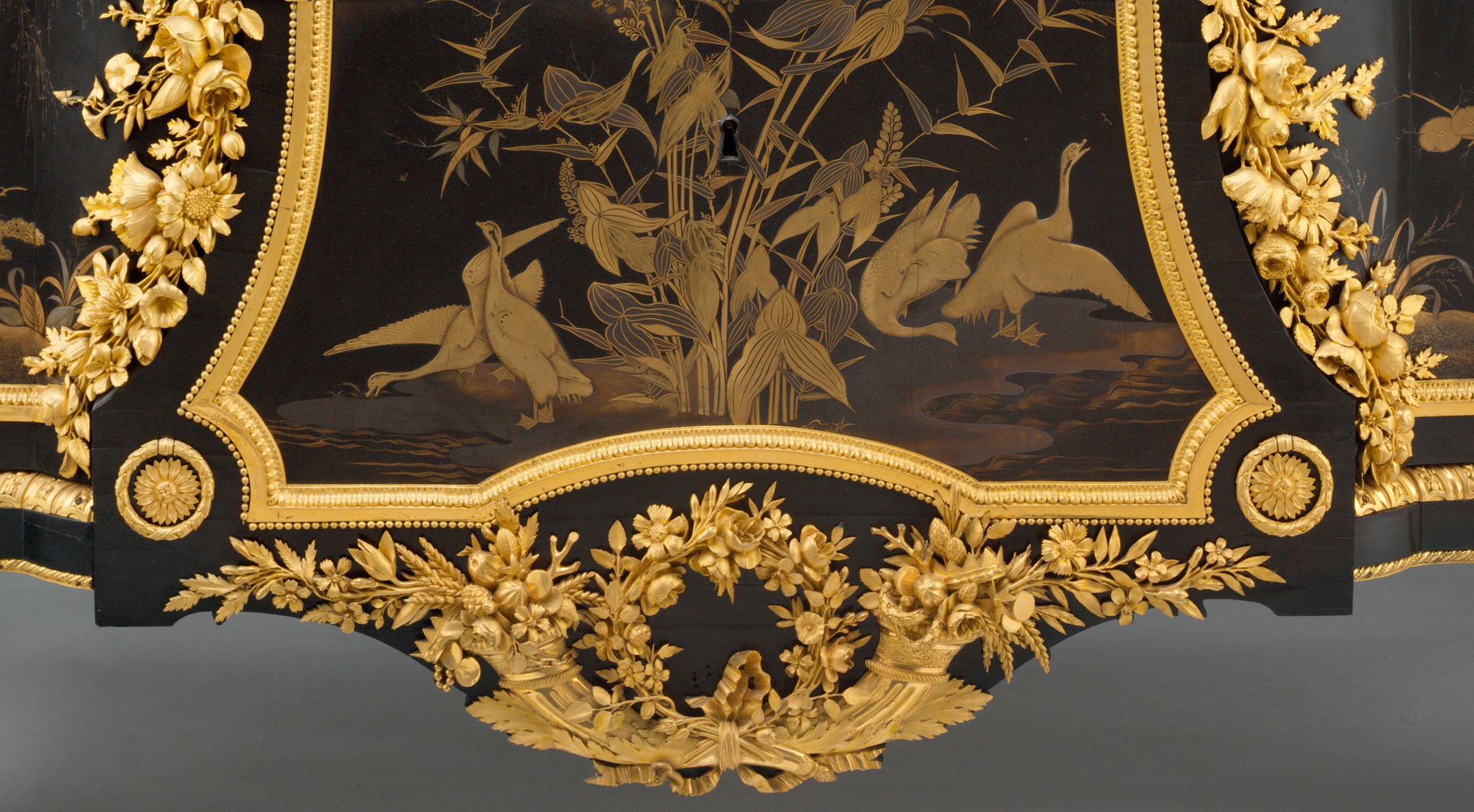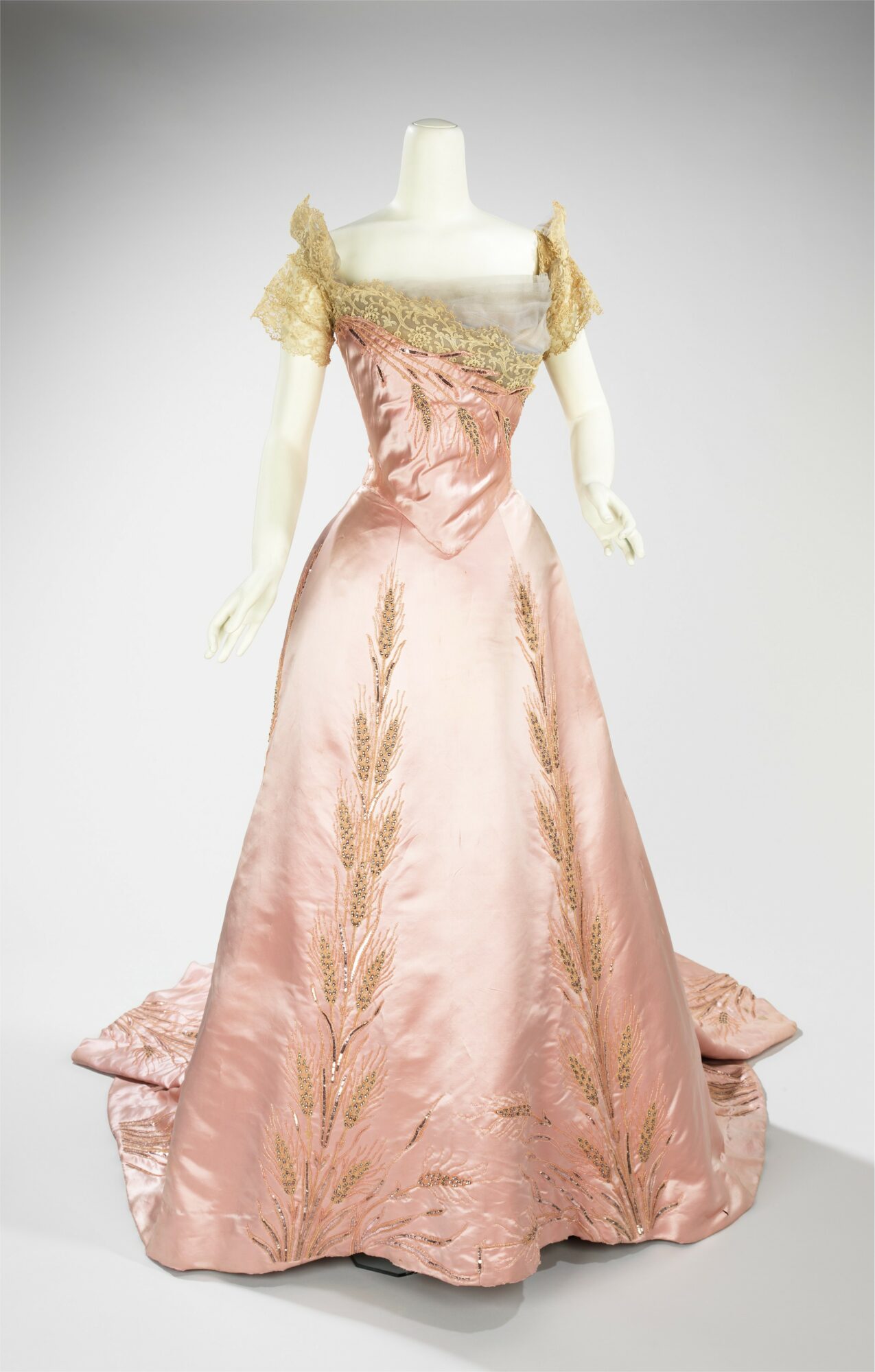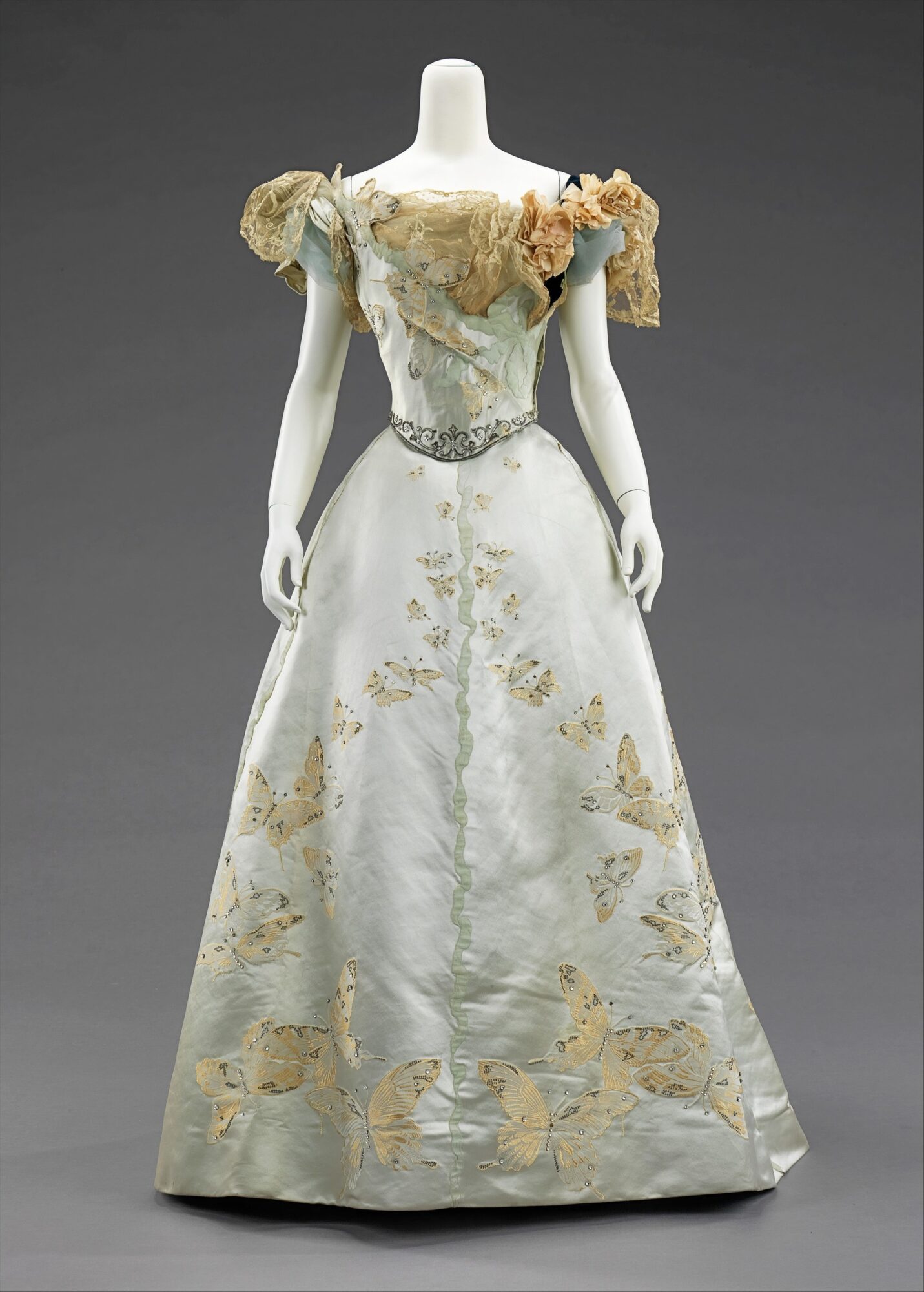The Garland Style took inspiration from so many 18th century sources, including French neoclassical ormolu furniture mounts (see the images below).
An impressive Garland Style pearl and diamond devant de corsage
The elaborate combination of swags, garlands and ribbon bows make this jewel created by Cartier, circa 1905, emblematic of the Garland Style.



Together with colliers de chien, tiaras and ropes of pearls, the stomacher – or corsage ornament – almost invariably set with pearls and diamonds, was among the prized possessions of fin de siècle society ladies.
The delicate design of these jewels was perfectly set off by the pale colours and diaphanous fabrics of the evening gowns fashionable at the time, often heavily embroidered with sequins and glass beads and supported by boned corsets (see images below).

When Parisian couturier Paul Poiret launched a new style in fashion which called for column-like tunics, the corset became redundant and, with it, stomacher brooches and other corsage decorations.
It is rare and very fortunate that a corsage ornament of this size and importance has survived to our days, with its large, silver-grey button pearl still in place.

